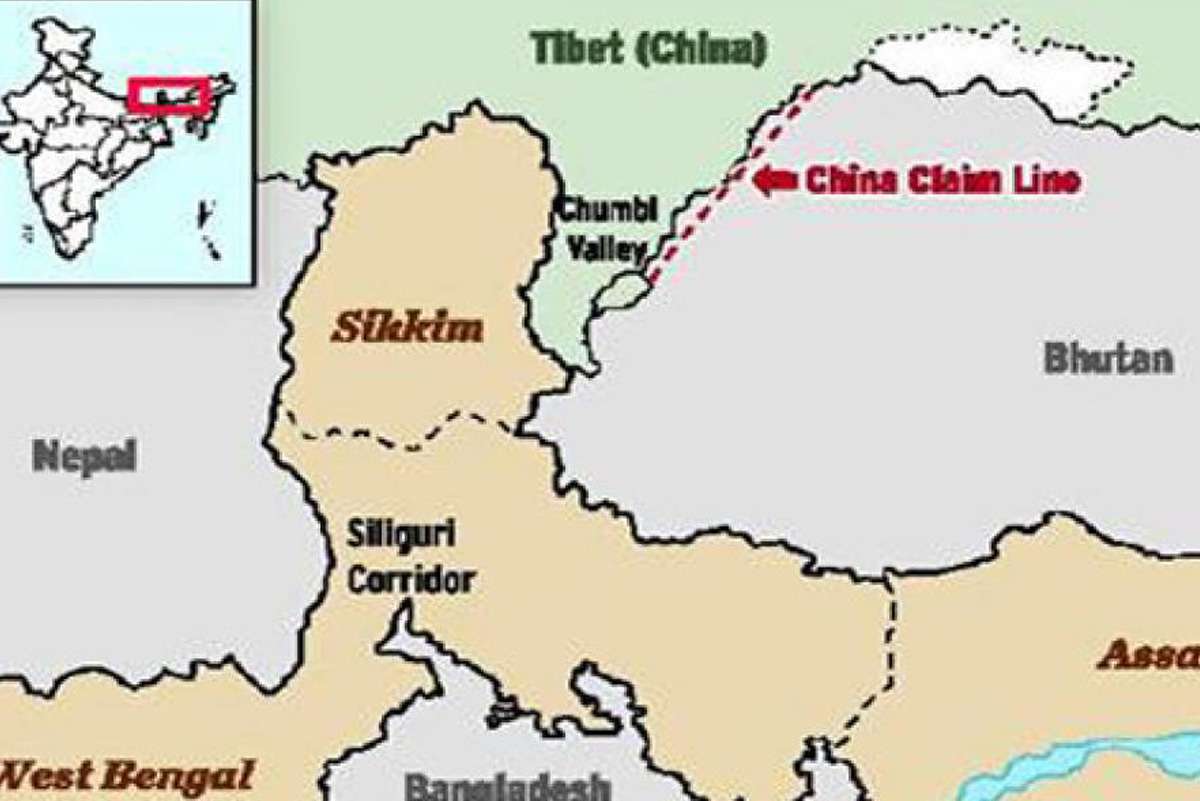The Siliguri Corridor or a thin “chicken’s neck” is a territory-connecting the seven Indian North-eastern States to West Bengal and the rest of India also called the “Siliguri Corridor”- lies in the Chumbi Valley of Chinese-held Tibetan Autonomous Region that is contiguous to the Indian States of Sikkim and Arunachal Pradesh.
The Chumbi Valley is flanked on either side by Sikkim on its west and Bhutan on the east. Nepal shares a common border with Sikkim and Chinese and Indian armies are face-to-face along the whole of Arunachal Pradesh.
The geostrategic significance of the place for India is that it is able to monitor the Chinese movements in the Chumbi Valley.
The Siliguri Corridor is an area so constricted that it is amazing that after the debacle at the hands of the Chinese, Indians have not developed their connectivity to desired extent.
Disadvantages for India: China can do to India what India did to Pakistan in 1971 by delinking the former East Pakistan from West Pakistan and helping to create the sovereign independent nation-state of Bangladesh.
Other disadvantages that India faces in its defensive posture vis-a-vis China is that many of the infrastructure projects of roads and bridges, belatedly initiated, have been delayed by the difficulties of the terrain and the inadequacy of heavy lift helicopters to deliver civil engineering material to the building sites.
Given China’s growing belligerence stoked in large part by the renewed Tibetan unrest within the Tibetan Autonomous Region (and that of the Uighur Muslims in Xingjiang province) marked by self-immolations by Buddhist monks and the blame for its bad governance in Tibet at India’s doorstep for being home to the largest Tibetan refugee population.By the very nature of its geography the Siliguri Corridor is indefensible with static obstacles and firepower.
As experience has shown the sustained patrolling by the Indian Army, paramilitary forces and the West Bengal police not to mention the protection forces of the Indian Railways, a broad guage and a meter-guage line pass through it-criminal and anti-national activity is rampant.
Problems with its defence and management
Defending it within an internal security concept will not work against a conventional military force of the type the Chinese can deploy from the north of the Chumbi Valley which is well supplied by a network of roads.
The fact that Bhutan lies to the east of the northern limits of the Siliguri corridor creates a dicey situation for India. The use of Bhutanese territory for the defence of the corridor will attract Chinese punitive action against Bhutan.
To ensure Bhutan’s sovereignty, territorial integrity and neutrality, India cannot do anything to jeopardize its very existence.
The emerging Nepal factor is also disturbing for India given that there is talk of not allowing recruitment of Gorkhas for the Indian Army.
Chinese tactics: The Chinese tactics will be to use the top of the funnel that is the Valley, as a “forming up place” for the PLA preparatory for an attack into the Siliguri Corridor.
One indicator of the Chinese intention will be the strength of the battalions that are permanently posted in the funnel of the Chumbi Valley.
What is happening in Doklam Cha is indicative of this Chinese design to control this territory.
Bangladesh and Nepal connivance.
It is unlikely that Bangladesh and Nepal can connive. The reasons are
- Both are dependent on India.
- Nepal for trade and transit route.
- Bangladesh for water
- Nepal again for a lot of goods and services.
- There are a good number of Madhesis in Nepal, who can be a real nuisance.
- India has further the Hindu card in Nepal.
- Bangladesh cannot do it easily because of its economic dependence and also because it is strategically surrounded by India.
- Economic interests of both the countries will take a real beating in case of any misdaventure.
International politics is strange though. There are only permanent interests not permanent friends in Politics.

